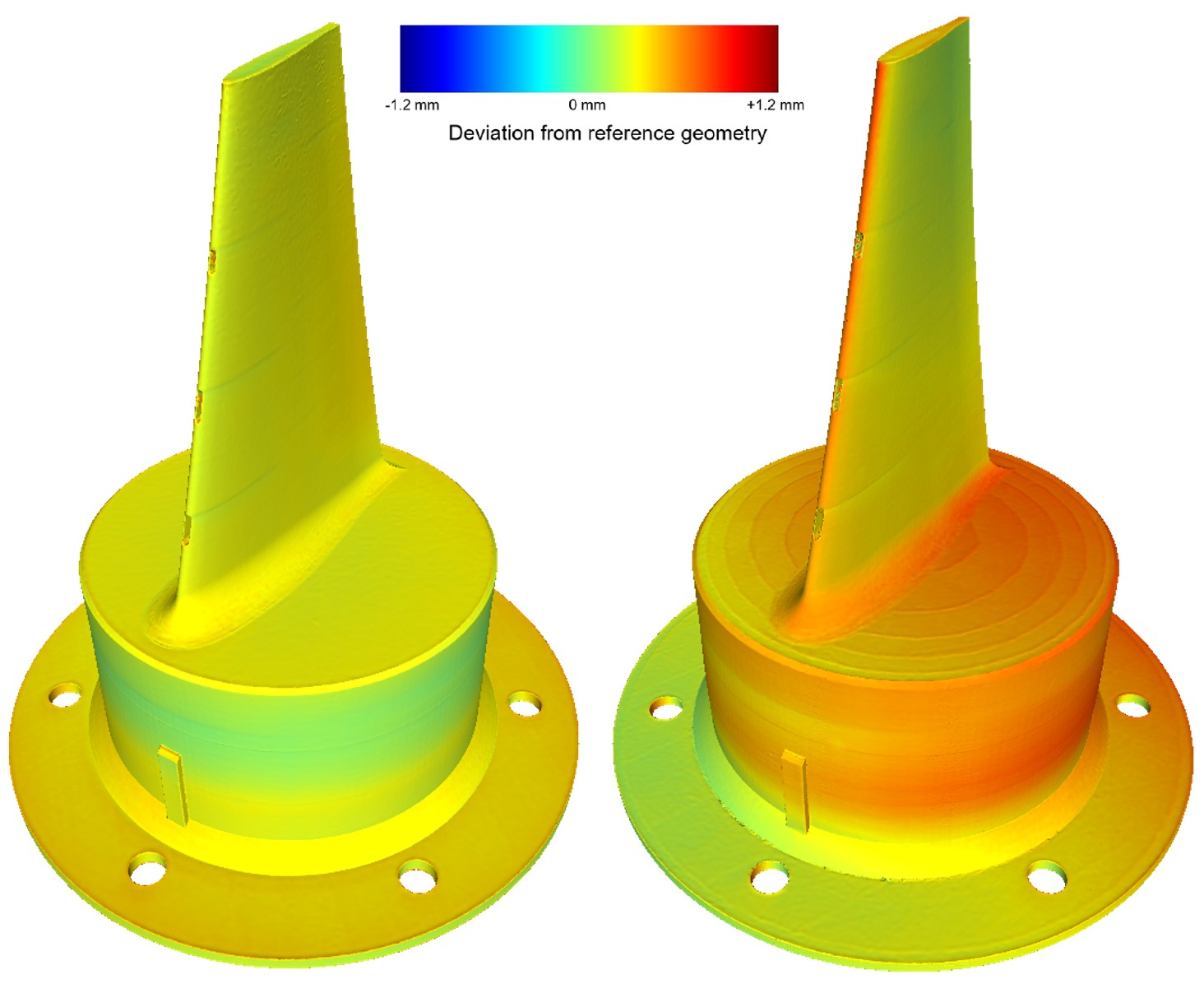
A rake is a probe or probe assembly with multiple tips that allows for multiple measurements of gas turbine engine performance to be taken simultaneously. This results in a complex component design, which is expensive to manufacture, susceptible to mechanical damage, and difficult to repair. A lack of replacements on site sometimes keeps planes on the ground until a replacement is produced. Additive Manufacturing (AM) has the potential to reduce manufacturing cost and provide replacements on-demand with reduced lead times.
The rake was redesigned to take advantage of the benefits of AM. This included consolidation of several parts into a single component and improved part functionality. The internal structure was redesigned to be self supporting, reducing the post-processing time required.
AM build distortion was then predicted using simulation tools. These were compensated for before a demonstrator part was produced in Inconel 718. The built part was inspected against the nominal design to validate the simulation tools and the part design.
"Additive manufacturing promises the possibility of massively reduced lead times. Through the use of simulation tools like Autodesk Netfabb, potential build failures can be identified and mitigated before any material is melted which is critical to achieving this goal."
Adam Holloway, Senior Research Engineer, MTC
Technical details regarding this case study including reports and files are available on the NCAM Knowledge Hub.

Nominal & Compensated Geometry